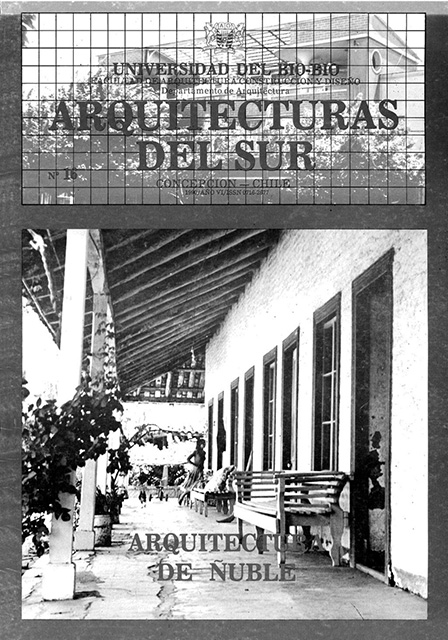Arquitectura rural de Ñuble
Abstract
Sabemos que a partir del siglo XVII la agricultura se consolida, dando paso a los grandes núcleos rurales que se fortalecen, convirtiéndose muchos de ellos en "unidades económicas de primordial trascendencia", y en modelos de organización y convivencia familiar o comunitaria. Eso explica que durante el período colonial surja en poblados o campos extensos y desamparados la construcción rural, elevada ya sea para protección del hombre, o para facilitar la explotación material de la tierra. En esta arquitectura civil rústica salta a la vista una clasificación simple, "la casa del fundo", es decir la casa del patrón, y la casa del inquilino el simple rancho campesino. De aquí surge que el término "las casas" sea usual entre los habitantes del campo.
Downloads
Downloads
Published
How to Cite
Issue
Section
License
The content of the articles published in each issue of Arquitecturas del Sur is the sole responsibility of the authors and does not necessarily represent the opinion of University of the Bío-Bío.
The authors will maintain their copyright; however, they will guarantee the journal the right to first publication and dissemination of their work. The publication of the article in Arquitecturas del Sur will be subject to the Creative Commons International license (CC BY-SA) that allows others to adapt: remix, transform and build on the material for any purpose, even commercially; share: copy and redistribute the material in any medium or format, as long as the authorship and first publication in this journal are acknowledged by citing them correctly, and their new contributions are under a license with the same terms.














 Programa de Información Científica/Concurso Fondos de Publicación de Revistas Científicas 2018/ Proyecto Mejoramiento de Visibilidad de Revistas UBB (Código:FP180007)
Programa de Información Científica/Concurso Fondos de Publicación de Revistas Científicas 2018/ Proyecto Mejoramiento de Visibilidad de Revistas UBB (Código:FP180007) 
